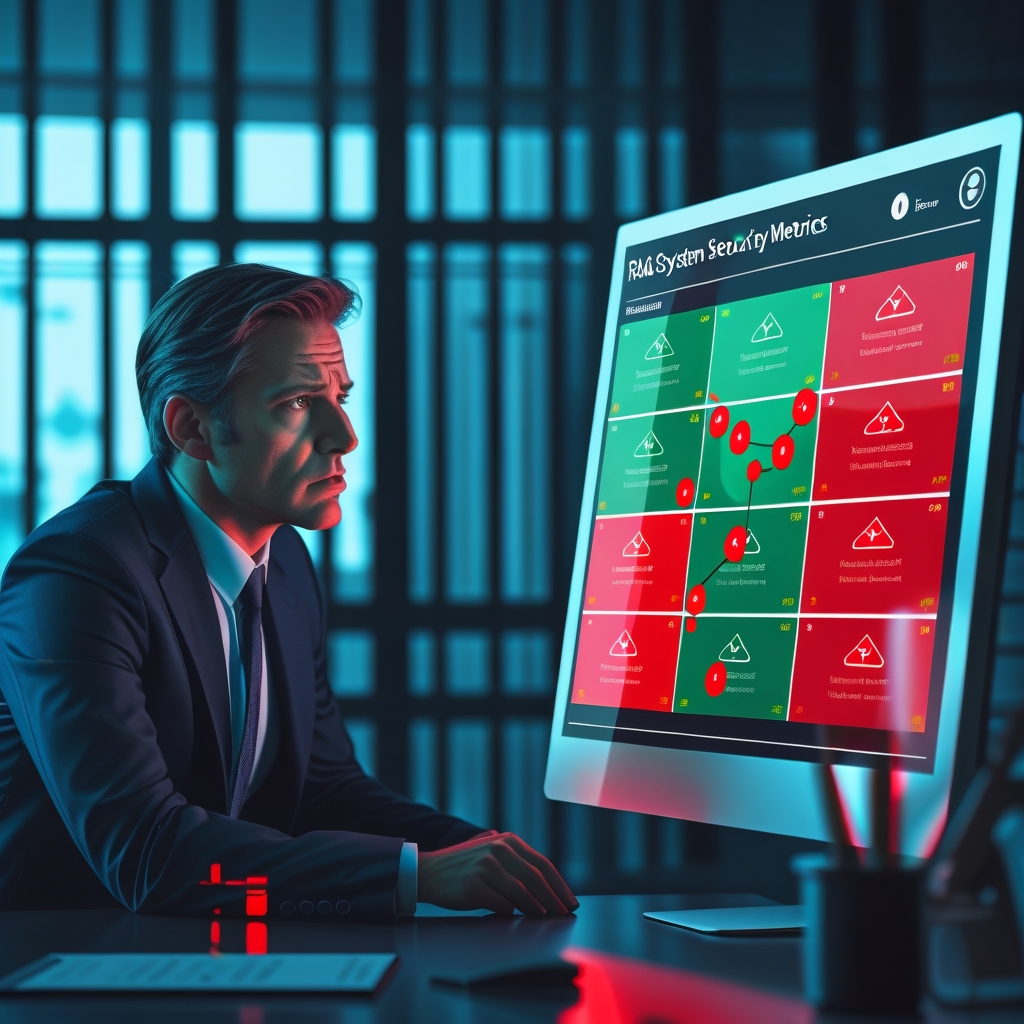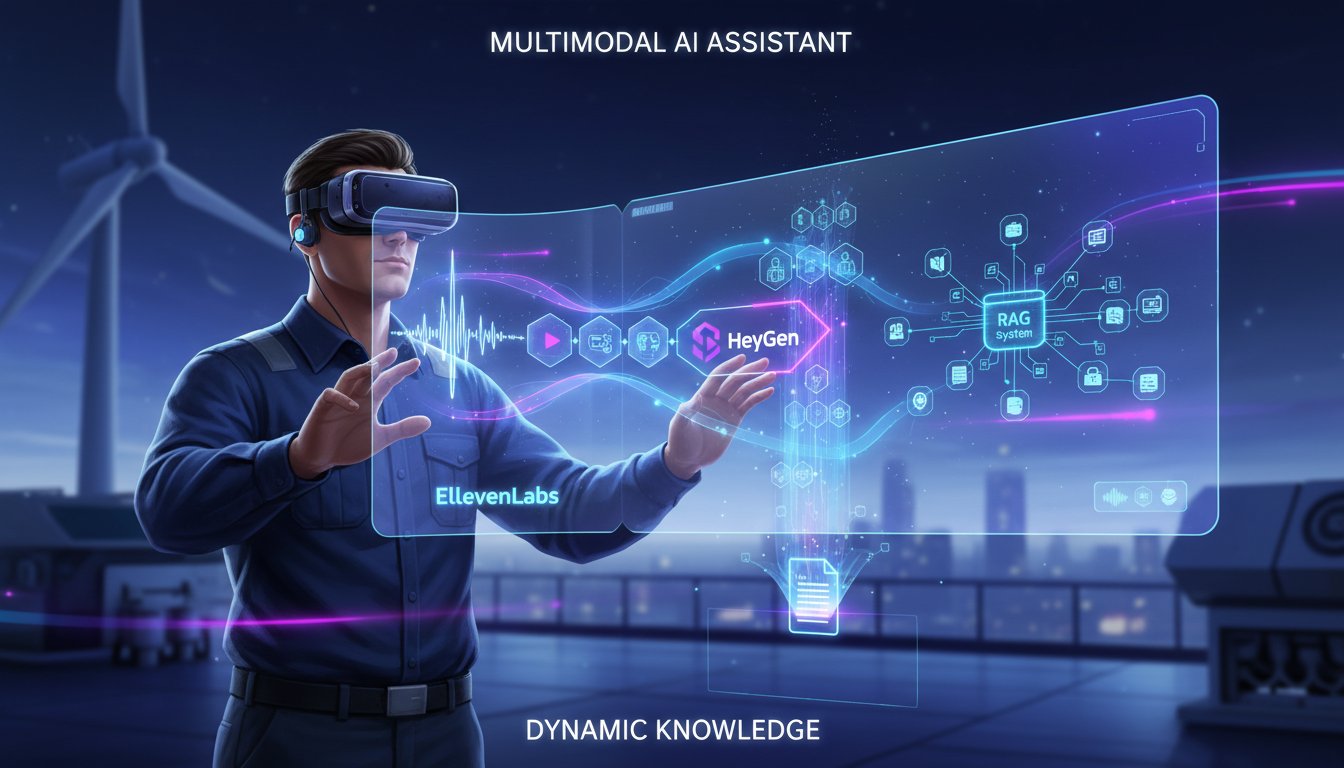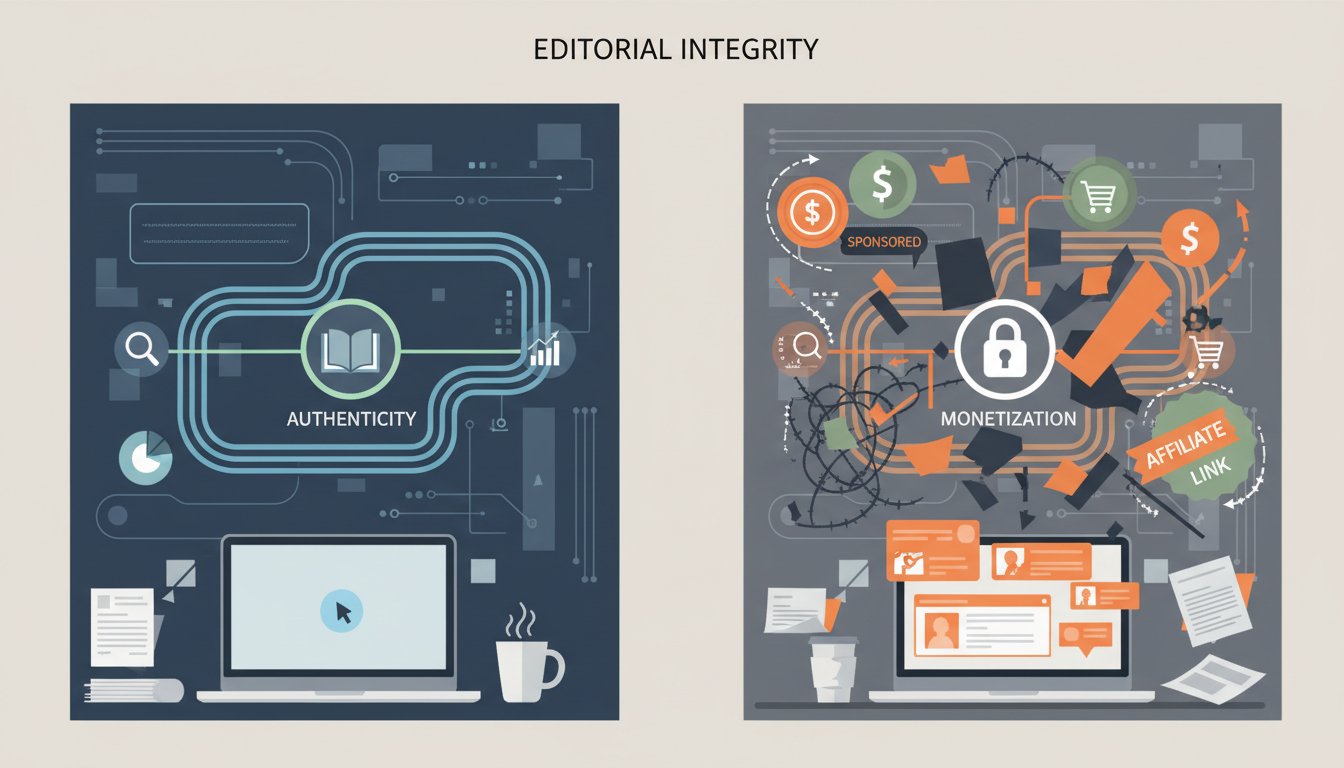Introduction: When RAG Becomes a Liability
I remember sitting across from a CTO at a major financial institution last month, watching his expression shift from excitement to concern as I walked him through the latest Bloomberg research findings. “Wait, you’re telling me our RAG implementation could actually be making our AI less safe?” he asked, visibly alarmed.
“That’s exactly what the data shows,” I replied, pulling up the striking statistics: Llama-3-8B models showed a jump from 0.3% unsafe responses to a concerning 9.2% when RAG systems were implemented without proper guardrails—a staggering 30-fold increase in potentially problematic outputs.
This revelation has sent shockwaves through the enterprise AI community in 2025. After years of being told that Retrieval Augmented Generation (RAG) was the silver bullet for hallucination reduction and improved accuracy, we’re now facing an uncomfortable truth: poorly implemented RAG systems can actually amplify risks rather than mitigate them.
In this article, I’ll walk you through why traditional RAG approaches fall short in enterprise environments, reveal the five critical architectural components every secure implementation must include, and provide a framework for evaluating your current system against best practices that leading organizations are adopting in 2025.
The False Security of Basic RAG Implementations
The Retrieval Paradox
The fundamental premise of RAG is deceptively simple: supplement your large language model with retrieved information to ground its responses in factual data. In theory, this should reduce hallucinations and improve accuracy. However, the Bloomberg research exposes a critical flaw in this reasoning.
When an LLM generates content on its own, it typically defaults to safe, general responses when uncertain. But when provided with retrieved content that might contain misleading, biased, or outdated information, the model gains unwarranted confidence in generating potentially harmful outputs.
“Most organizations implement RAG with a singular focus on accuracy and performance metrics,” explains Dr. Samantha Chen, Principal AI Researcher at Firecrawl. “They completely overlook the security implications of injecting external data into their generative pipeline.”
This oversight is particularly dangerous in regulated industries like finance, healthcare, and legal services, where incorrect or misleading AI outputs can have serious consequences.
The Security Blindspot in Standard Architectures
Standard RAG architectures typically include three primary components:
- Document processing and chunking
- Vector database for similarity search
- LLM integration for response generation
Noticeably absent from this basic architecture are robust security controls, provenance tracking, and content evaluation mechanisms—all critical for enterprise deployments.
As we’ve seen from the Bloomberg study, this gap creates significant vulnerabilities. Without proper content filtering and evaluation, potentially problematic information can flow directly from your knowledge base into generated outputs with minimal oversight.
The 5 Essential Components of Secure Enterprise RAG
To address these challenges, leading organizations are adopting more sophisticated RAG architectures with five essential components for secure, enterprise-grade implementations:
1. Security-First Data Indexing
Unlike basic RAG systems that index all available information, secure enterprise implementations start with rigorous content evaluation during the indexing phase.
“We’ve developed a multi-stage content filtering pipeline that evaluates all documents before they enter our knowledge base,” says Michael Rodriguez, VP of AI Security at a Fortune 100 financial services company. “This includes checking for factual accuracy, bias, and potential toxicity.”
Implementation strategies include:
- Automated content classification using domain-specific taxonomies
- Factual verification against trusted sources
- Metadata enrichment with confidence scores and source reliability metrics
- Regular re-evaluation of indexed content for continued relevance
By filtering content before it enters your retrieval system, you significantly reduce the risk of problematic information being surfaced during generation.
2. Context-Aware Retrieval Mechanisms
Basic vector similarity search is insufficient for enterprise needs. Secure implementations employ sophisticated retrieval mechanisms that consider the context and intent of user queries.
The most effective approach in 2025 is hybrid retrieval, which combines:
- Semantic vector search for conceptual understanding
- Keyword-based search for specific terminology
- Knowledge graph navigation for structural relationships
According to research from Orkes, implementing hybrid retrieval can reduce irrelevant retrievals by up to 45% compared to vector search alone.
“We’ve moved beyond simple BM25 or vector retrieval to a cascading approach,” explains Dr. Alex Thompson, Chief AI Officer at Vespa. “Each query triggers multiple retrieval methods, with results evaluated and reranked based on relevance, recency, and security parameters.”
3. Provenance Tracking and Attribution
Enterprise RAG systems must maintain complete transparency about the source of all information used in generating responses.
“Without robust provenance tracking, you create a black box that’s impossible to audit,” warns security researcher Maria Gonzalez. “This is unacceptable in regulated industries.”
Advanced implementations include:
- Detailed source attribution for all retrieved content
- Version control and timestamping for knowledge base entries
- Confidence scoring for retrieved information
- Transparent citation in final outputs
This level of transparency not only improves security but also builds trust with end-users and simplifies compliance with regulations like GDPR, HIPAA, and industry-specific requirements.
4. Multi-Stage Content Evaluation
Secure RAG systems employ multiple evaluation checkpoints throughout the retrieval and generation process.
“The key insight from our implementation at Microsoft is that evaluation needs to happen at every stage,” notes Julia Wong, Principal Program Manager for Azure AI. “Pre-retrieval, post-retrieval, and post-generation evaluations create a defense-in-depth approach to content safety.”
A comprehensive evaluation framework includes:
- Pre-retrieval: Query classification and intent analysis
- Post-retrieval: Content safety scoring and relevance assessment
- Post-generation: Output safety evaluation and alignment checking
Each stage employs specialized models trained on domain-specific data to identify potential issues before they reach the end-user.
5. Dynamic System Monitoring
Unlike static implementations, secure enterprise RAG systems include continuous monitoring and feedback loops.
“We track every interaction with our RAG system in real-time,” explains Raj Patel, CTO of a leading healthcare AI provider. “This allows us to identify emerging patterns of problematic queries or responses and adapt our security measures accordingly.”
Effective monitoring includes:
- User interaction tracking and analysis
- Anomaly detection for unusual query patterns
- Regular system-wide audits
- Automated retraining based on feedback
This dynamic approach enables organizations to stay ahead of evolving security challenges and continuously improve system performance.
Implementing Multimodal RAG: The Next Frontier
As we move further into 2025, multimodal RAG systems—those capable of processing and retrieving information from text, images, audio, and structured data—are becoming increasingly prevalent in enterprise environments.
These systems offer powerful capabilities but introduce additional security considerations.
Cross-Modal Security Challenges
Multimodal RAG systems face unique challenges in ensuring consistent security across different data types:
- Inconsistent Evaluation: Different modalities require specialized evaluation approaches
- Cross-Modal Context Loss: Security context can be lost when transitioning between modalities
- Increased Attack Surface: More data types mean more potential vulnerabilities
“The most common mistake we see in multimodal implementations is applying text-centric security approaches to non-text modalities,” explains Dr. Rebecca Liu, leading researcher at NVIDIA. “Images, audio, and structured data each require specialized security measures.”
Advanced implementations address these challenges through unified embedding spaces and coordinated security policies across all modalities.
Practical Multimodal Implementation Steps
For organizations considering multimodal RAG, a phased approach is recommended:
- Start with text-based RAG and establish robust security practices
- Add structured data as the next modality, with appropriate data validation
- Incorporate images with specialized content safety filters
- Expand to audio and video with appropriate safeguards
Each phase should include comprehensive security testing and evaluation before moving to the next.
Evaluating Your Current RAG Implementation
How does your organization’s RAG system measure up against these enterprise-grade best practices? Use the following checklist to identify potential security gaps:
Security Assessment Checklist
- [ ] Content Filtering: Do you have robust filters for all content entering your knowledge base?
- [ ] Retrieval Mechanisms: Are you using hybrid retrieval approaches rather than simple vector search?
- [ ] Provenance Tracking: Can you trace all generated content back to specific sources?
- [ ] Multi-Stage Evaluation: Do you evaluate content at multiple stages in your pipeline?
- [ ] Continuous Monitoring: Are you tracking system performance and adapting to emerging threats?
- [ ] Domain-Specific Guardrails: Have you implemented industry-specific security measures?
- [ ] Multimodal Security: If using multiple data types, do you have modality-specific security controls?
If you’ve answered “no” to any of these questions, your RAG implementation likely has security vulnerabilities that need addressing.
Case Study: Financial Services RAG Transformation
A global investment bank discovered significant security issues with their initial RAG implementation during a routine audit. Their system, designed to provide market analysis to advisors, was occasionally generating misleading financial advice due to outdated information in their knowledge base.
Their transformation included:
- Implementing domain-specific content evaluation using financial services taxonomies
- Developing a hybrid retrieval system with specialized financial knowledge graphs
- Creating a robust provenance tracking system with automatic fact-checking
- Establishing continuous monitoring with real-time alerts for potential regulatory issues
The results were impressive: a 97% reduction in potentially misleading outputs and a 35% improvement in advisor satisfaction with the system.
“What made the difference wasn’t just better technology, but a fundamental shift in how we approached RAG security,” explains their Chief Information Security Officer. “We moved from thinking about RAG as a technical implementation to viewing it as a critical business system requiring enterprise-grade security.”
Implementation Roadmap for 2025
Based on current best practices and emerging trends, here’s a roadmap for implementing secure enterprise RAG in 2025:
Phase 1: Foundation (1-2 months)
- Assess current systems and identify security gaps
- Develop content evaluation frameworks specific to your domain
- Implement basic provenance tracking and attribution
Phase 2: Enhancement (2-3 months)
- Deploy hybrid retrieval mechanisms
- Establish multi-stage content evaluation
- Implement comprehensive monitoring systems
Phase 3: Advanced Capabilities (3-4 months)
- Add multimodal support with appropriate security controls
- Integrate with enterprise security infrastructure
- Establish continuous improvement processes
“The most successful implementations we’ve seen take a phased approach that prioritizes security from day one,” notes Jessica Miller, Principal Consultant at Deloitte’s AI Practice. “Organizations that try to retrofit security onto existing implementations inevitably face more challenges and higher costs.”
Conclusion: Beyond Basic Retrieval
The Bloomberg research findings serve as a crucial wake-up call for organizations implementing RAG systems. The simple assumption that retrieval automatically enhances security has been thoroughly debunked, revealing that proper implementation is far more nuanced than many organizations initially believed.
As we progress through 2025, the distinction between basic RAG implementations and secure enterprise systems will become increasingly apparent. Organizations that invest in comprehensive security architectures will gain significant competitive advantages through more reliable, trustworthy AI systems.
Remember my conversation with that concerned CTO? Six months later, his organization has completely transformed their approach to RAG security, implementing all five essential components we’ve discussed. “It wasn’t a simple journey,” he told me recently, “but the peace of mind knowing our systems are genuinely secure is well worth the investment.”
The path to secure enterprise RAG isn’t easy, but with the right approach, it’s certainly achievable—and increasingly essential for any organization serious about responsible AI implementation.
Take Your Enterprise RAG Implementation to the Next Level
Ready to enhance your organization’s RAG security? Start by conducting a comprehensive assessment of your current implementation against the checklist provided in this article.
Identify your most critical gaps and develop a phased approach to addressing them, beginning with the foundational security components discussed above.
For personalized guidance on implementing secure enterprise RAG systems tailored to your specific industry requirements, reach out to our team of specialists who can help you navigate this complex but essential journey.




